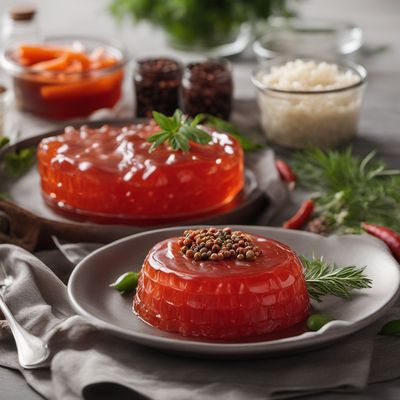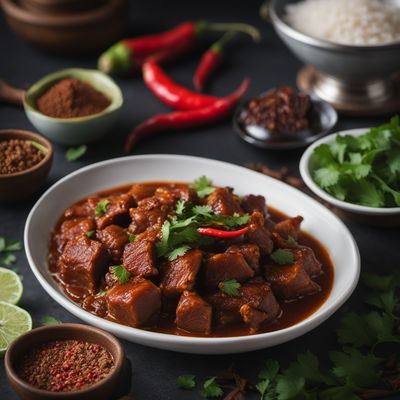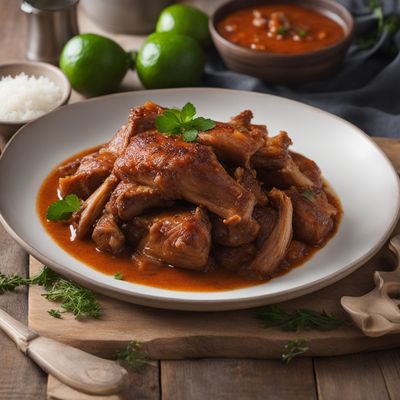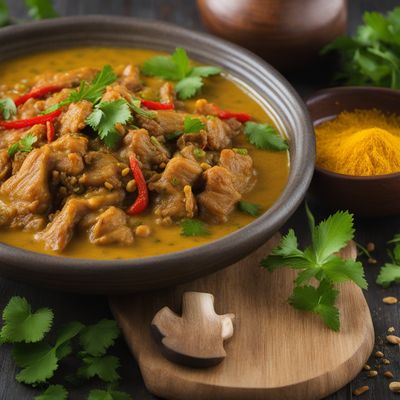
Ingredient
Pig trotters and feet
"Savory Delights: Exploring the World of Pig Trotters and Feet"
Pig trotters and feet are the lower part of a pig's leg, consisting of the foot and ankle joint. They are characterized by their gelatinous texture, rich collagen content, and a combination of lean meat and fat. The skin is often removed, revealing tender meat and connective tissues that become meltingly tender when cooked slowly. The flavor is savory and slightly sweet, with a depth that intensifies during the cooking process. The texture is soft and succulent, with a slight chewiness from the connective tissues.
Origins and history
Pig trotters and feet have a long history in culinary traditions worldwide. They have been consumed for centuries in various cultures, including Chinese, French, Spanish, and Southern American cuisines. In many cultures, pig trotters and feet were considered a humble ingredient, often used to create nourishing and economical dishes. They were also valued for their collagen-rich properties, which contribute to the creation of gelatinous stocks and broths.
Nutritional information
Pig trotters and feet are a good source of collagen, protein, and essential minerals such as iron and zinc. They are relatively high in calories due to their fat content, with approximately 250-300 calories per 100 grams.
Allergens
Pig trotters and feet may cause allergic reactions in individuals with pork allergies.
How to select
When selecting pig trotters and feet, look for cuts that are fresh, with a pale pink color and no unpleasant odor. The skin should be smooth and free from blemishes. Additionally, choose cuts that have a good amount of meat attached to the bones for a more substantial dish.
Storage recommendations
To maintain freshness, store pig trotters and feet in the refrigerator at a temperature below 40°F (4°C). They can be kept for up to 3 days in the refrigerator. For longer storage, they can be frozen for up to 3 months.
How to produce
Pig trotters and feet can be produced by raising pigs and butchering them to obtain the desired cuts. This process requires professional knowledge and equipment.
Preparation tips
Before cooking, pig trotters and feet should be thoroughly cleaned and blanched to remove any impurities. They can be braised, stewed, or slow-cooked to achieve a tender and flavorful result. Pig trotters and feet are commonly used in dishes such as soups, stews, terrines, and as a base for stocks and broths. They can also be used to add depth and richness to sauces and gravies.
Culinary uses
Pig trotters and feet are commonly used in various cuisines. They are a key ingredient in dishes like French cassoulet, Spanish cocido, Chinese braised pig trotters, and Southern American soul food dishes like pig's feet stew. They are also used to create gelatinous stocks and broths, adding depth and richness to soups and sauces.
Availability
Pig trotters and feet are commonly available in regions where pork is consumed, including Europe, Asia, and North America.
More ingredients from this category

Pig heart
The Versatile Organ: Pig Heart

Pig tail
"Savor the Delightful Twist: Exploring the Culinary Wonders of Pig Tail"

Pig stomach
The Savory Delicacy

Pig tongue
A Delicacy Worth Exploring

Pig marrowbone
"Savor the Richness: Exploring the Delights of Pig Marrowbone"

Pig head
The Versatile Delicacy: Pig Head
Recipes using Pig trotters and feet

Kholodets - Traditional Russian Meat Jelly
Savory Delight: A Taste of Russian Meat Jelly

Sikkimese-inspired Spiced Pork Trotters
Sikkimese Spice Infused Pork Trotters: A Delightful Fusion of Flavors

Dominican-style Braised Pork Trotters
Caribbean Delight: Slow-cooked Pork Trotters Dominican Style

Traditional Romanian Pork Aspic
Savory Delight: Romanian Pork Aspic - A Culinary Masterpiece

Zampone Modena with Savory Herb Stuffing
Savory Stuffed Zampone Modena: A Delightful Italian Culinary Tradition

Vanuatuan-style Crubeens
Island-Inspired Pig's Feet Delight

Swedish Crispy Pig's Feet
Crispy Delights: Swedish Pig's Feet with a Crunchy Twist